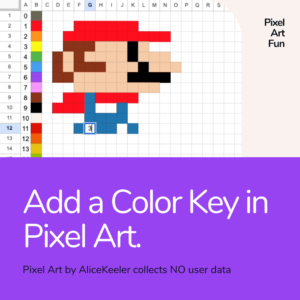People stink at fractions. I would say it is rare to hear students or adults claim “I’m great at fractions!” Memorizing steps and rules to learn fractions clearly is not that effective. PLEASE do not teach students tricks such as “Keep Flip Change.” When approaching any math problem it is important that students start by thinking through what they are doing and not simply remembering steps. Students get confused when they do or do not need common denominators because they are trying to remember a rule instead of really understanding what is going on. Help students to visualize adding fractions until THEY get the pattern.
I asked my 4th grade son what 1/2 plus 3/4 was. He got flustered and wasn’t sure what to do. He knew he should not add the denominators but out of frustration went ahead and did it anyway just so he could get an answer. I then had him use Mathigon Polypad (mathigon.org/polypad)
Using Polypad to Add Fractions
Students do not need to log into Mathigon in order to use the free resource Polypad. IF they want to SAVE their work, they will need to login.

I showed my 10 year old one time how to drag out the fraction bars and resize them.

Drag out the desired fraction bar and then grab the edge to take it from being a value of 1 to the desired fraction. Clicking on the bar gives different options. One is to “rename” the bar into different chunks. Students easily visualize how 1/2 is the same as 2/4. Rather than pointing this out to them, ask students “What do you notice?” Allow them to find the patterns.

Let Students Explore
It is tempting to do the thinking for the students. We want them to right away get to the lowest common denominator. However, students, given time, can figure out this concept once they have established the patterns. I gave my son a problem for him to try on his own and he renamed the 1/3 bars until the denominators were 1/30. I was kind of horrified but kept my mouth shut. He then got the 1/2 bars to the same denominator of 1/30 and he counted out each bar to add up and get a total over 30.

Let’s Do It Again
Expressing things multiple ways is a norm in my classroom. When we use digital tools that make it easy to investigate another way of approaching the problem students can do the same problem 5 times and not complain.
“Great, now what is another way to do it? Can you do it with a different denominator?”
My son did the fraction visualization again. Also with a larger denominator. We repeated this 5 times. He was having such a fun time using Polypad he had no complaints about that.
Equivalent Fractions
You did this 5 different ways, but got “different answers.” If they are all correct they they are equal. So we wrote out all the equivalent fractions using an equals sign.
Find the Pattern
I want my son to figure out the pattern before I tell him. It didn’t take him long to say “no not this one” as he naturally realized he would not be able to get the other fraction to have that as a denominator.
Doing a Couple of Problems Multiple Ways is More Effective
We only did 4 practice problems, but each of them he did multiple ways. This is more effective than a worksheet of 20-30 repetitive problems. The 4 practice problems required him to strategize and think through them. When doing a worksheet of repetitive problems you stop “thinking” after 3 problems and are just trying to apply the steps. It is important that the brain is challenged.
“If doing 30 problems worked, we would all be good at math.”
Jo Boaler
Without me prompting him, my son was figuring out how to be more efficient to get common denominators.
Spaced Repetition
Karpicke, J. D., & Roediger, H. L. (2008). The critical importance of retrieval for learning. Science, 319(5865), 966-968.
While this paper focuses on the importance of retrieval practice for learning, it also discusses the benefits of spaced repetition. The authors argue that spaced repetition allows for better long-term retention of material compared to massed practice, where material is crammed all at once. They cite several studies in support of this claim, including research on math problem solving. One study mentioned found that spaced repetition improved students’ ability to solve math problems over time, whereas massed practice did not lead to significant improvements.
Rohrer, D., & Taylor, K. (2006). The effects of overlearning and distributed practice on the retention of mathematics knowledge. Applied Cognitive Psychology, 20(9), 1209-1224.
This study examined the effects of overlearning and distributed practice on the retention of mathematics knowledge. The results showed that distributed practice led to better long-term retention of math knowledge compared to massed practice. The authors argue that this is due to the benefits of spaced repetition, where material is revisited at intervals, allowing for more effective encoding and retrieval of information. Overall, the study provides further evidence for the effectiveness of spaced repetition in improving retention of math knowledge.
Revising Visualizing
The next day I asked him to repeat the task using one question. He eagerly repeated it. I could see that he was thinking about the visualization instead of just following steps.
Tim Brzezinski
Tim Brzezinski is a master with digital math tools. He has a great TikTok channel to explain math concepts. He also uploads helpful math videos to his YouTube channel.


Howie Hua
Another great resource for understanding math concepts is Howie Hua. Check out his YouTube Channel and his TikTok Channel.


- Digital Math Manipulatives with Mathigon
- Open Middle: Equivalent Fractions Activity
- Summer of Math 2021 with Howie Hua
- Teach Math Remotely with GeoGebra
- How Would You Visualize a Fraction Divided by a Fraction
-
30 Keyboard Shortcuts That Teachers Need
The secret to feeling more confident on the computer is keyboard shortcuts! Here are 30 Keyboard Shortcuts That Teachers Need
-
Hide All Tabs – Google Sheets
Have a lot of tabs in your Google Sheets spreadsheet? Here is how to hide all tabs at once, quickly.
-
Transform Your Lessons: The Power of Desmos Classroom Computation Layer
Take Desmos Classroom even further with the computation layer. Customize your lesson with the CL.
-
Get Real-Time Insights into Student Thinking
Desmos Classroom is a FREE tool that allows you to gain real time insights into student thinking during a lesson.
-
Analyzing AI Created Rubrics Essentials for Teachers
Analyzing AI Created Rubrics: Discover the critical elements of effective rubrics and how to assess the quality of AI-generated options.
-
Add a Color Key in Pixel Art
Pixel Art in Google Sheets is really fun, but how do you know what number corresponds to what color? Add a color key in pixel art.
Visualize Adding Fractions
To visualize adding fractions, first, understand that fractions represent parts of a whole. Next, find a common denominator for the fractions you want to add. This is necessary because fractions with different denominators cannot be added directly. Once you have a common denominator, you can add the numerators of the fractions together. To do this, imagine shading in the corresponding parts of the whole for each fraction. Then, combine the shaded parts to find the total shaded area, which represents the sum of the fractions. Finally, simplify the resulting fraction if possible. By visualizing the process of adding fractions in this way, it becomes easier to understand and remember the steps involved.
Visualize Adding Fractions Using Mathigon Polypad
Mathigon Polypad is a powerful online tool that can help visualize adding fractions. Here are the steps to do it:
- Open the Mathigon Polypad website and click on “Fractions” to open the fraction tool.
- Drag two fraction blocks onto the workspace. For example, you could drag 1/4 and 3/8 blocks.
- Click on the gear icon in the corner of the fraction block to edit the denominator. Change the denominators so they are the same. For example, change both denominators to 8.
- Drag the pieces of the fractions to shade in the appropriate amount. You can use the square and rectangle blocks to create the shapes you need. For example, drag two eighths and three eighths onto the workspace.
- Click on the “Combine” button to see the resulting fraction. The total shaded area represents the sum of the two fractions you added.
- If necessary, simplify the resulting fraction by clicking on the gear icon and dividing both the numerator and denominator by a common factor.
By using Mathigon Polypad, you can easily visualize adding fractions and see the results in real-time. This can help deepen your understanding of the concept and make it easier to remember the steps involved.












